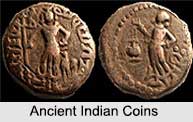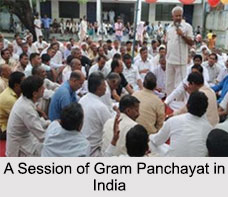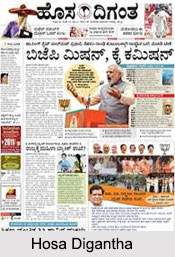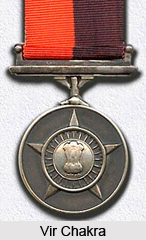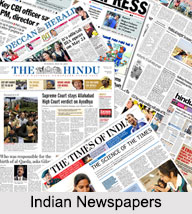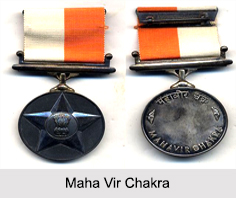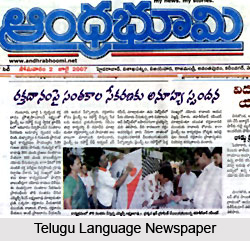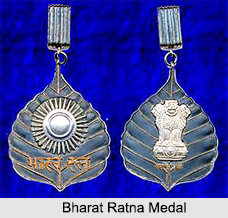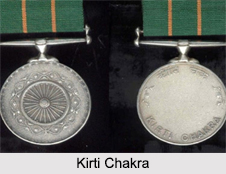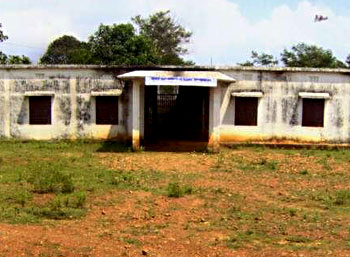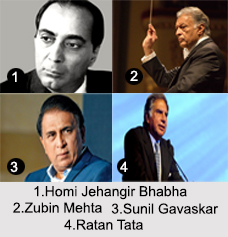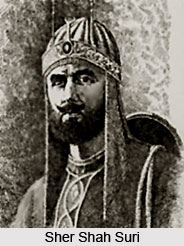 Composition of Mughal Army included cavalry; infantry; artillery; elephants and the Commissariat Department consisting of carts, draught cattle, camels, mules and donkeys. The history of the Mughal army is the history of the Mansabdari system. This system, however, existed in the country in another form. There was a military aristocracy under the Afghans and Sher Shah Suri had put it on a still firm footing. Under the Mughal system, the Mansabdars not only maintained the required number of troops, but were also given other responsibilities of the State. They were recruited, promoted, suspended or dismissed only by the Emperor. Besides, constituting a military hierarchy these officers also held ranks of profit under the State. One of the redeeming features of the system was that a mansab was not a hereditary honour. Dakhlis were one of the types of soldiers who served with the Mansabdars. They owed their loyalty to their chief and shared his fortunes. Besides these troopers the Mansabdars maintained infantry, elephants and a commissariat Department. A Mansabdar of 1,000 horses was required to maintain about 400 horses, 200 elephants, 160 camels, 40 mules and 320 carts.
Composition of Mughal Army included cavalry; infantry; artillery; elephants and the Commissariat Department consisting of carts, draught cattle, camels, mules and donkeys. The history of the Mughal army is the history of the Mansabdari system. This system, however, existed in the country in another form. There was a military aristocracy under the Afghans and Sher Shah Suri had put it on a still firm footing. Under the Mughal system, the Mansabdars not only maintained the required number of troops, but were also given other responsibilities of the State. They were recruited, promoted, suspended or dismissed only by the Emperor. Besides, constituting a military hierarchy these officers also held ranks of profit under the State. One of the redeeming features of the system was that a mansab was not a hereditary honour. Dakhlis were one of the types of soldiers who served with the Mansabdars. They owed their loyalty to their chief and shared his fortunes. Besides these troopers the Mansabdars maintained infantry, elephants and a commissariat Department. A Mansabdar of 1,000 horses was required to maintain about 400 horses, 200 elephants, 160 camels, 40 mules and 320 carts.
Akbar, who undertook many an expedition and extended the frontiers of his Empire in all the directions, had a force of near about 384,758 cavalry, 3,877,557 matchlock-men and a large number of infantry. Shah Jahan, whose region has been called the `Golden Age` in Indian history had a force of 200,000 cavalry and 40,000 infantry, musketeers and artillerymen. Besides this the princes and nobles had another 185,000 cavalry. Aurangzeb maintained 300,000 cavalry and 600,000 matchlock-men besides a huge force of infantry.
Military Organisation under Mughal Rule
As the rule of the Mughals was based primarily on their military they kept a very efficient cavalry and obtained all their decisions with the help of these highly mobile forces. A trooper was considered a better soldier. He provided his own horse, arms and equipment. Horses were imported from Arabia, Iran, Turkey and other countries in the north besides Kashmir. Akbar`s stables consisted of 12,000 horses of the best quality. Brood mares were looked after by skilful persons. Branding of horses was systematically and rigidly enforced by Akbar. The top-khana was considered to be the `locks and keys of the Mughal Empire`. The khansaman was in charge of the artillery which also consisted of the manufacturing and ordnance branches. He also maintained the descriptive rolls of the men and effected all appointments and promotions. Reserve artillery and stores were stocked at Agra, Delhi and Lahore. These were placed under trusted commanders by the Emperor. During Aurangzeb`s reign the artillery had been perfected considerably. Manufacture of the guns was a crude process.
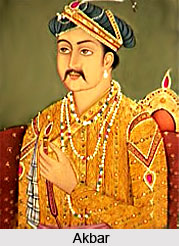 Besides the field artillery other guns in use during Mughal rule were rockets, mortars, cannon, catapults, and some sort of projectile containing gun powder. The gunner was termed as `golandaz`. The heavy guns also had as many as six to 700 draught oxen and one to four elephants on their establishment. The heavy guns were mounted on low platforms and in rainy season their transportation must have been a difficult operation indeed. The heavy guns used for static defences on the ramparts of the forts fired shots of sixty to one hundred and twenty pounds each. These were given high sounding names and many of them were cast before important campaigns. The infantry was not a very popular service and it was considered to be inferior to the cavalier who owned a horse. Besides the matchlock-men there were the archers, various tradesmen, water-carriers, pioneers and variety of followers, attendants and retainers forming a kind of militia or armed police.
Besides the field artillery other guns in use during Mughal rule were rockets, mortars, cannon, catapults, and some sort of projectile containing gun powder. The gunner was termed as `golandaz`. The heavy guns also had as many as six to 700 draught oxen and one to four elephants on their establishment. The heavy guns were mounted on low platforms and in rainy season their transportation must have been a difficult operation indeed. The heavy guns used for static defences on the ramparts of the forts fired shots of sixty to one hundred and twenty pounds each. These were given high sounding names and many of them were cast before important campaigns. The infantry was not a very popular service and it was considered to be inferior to the cavalier who owned a horse. Besides the matchlock-men there were the archers, various tradesmen, water-carriers, pioneers and variety of followers, attendants and retainers forming a kind of militia or armed police.
Compensation was sanctioned for any losses inflicted on the populace. Transport animals were Oxen, elephants, camels, pack-ponies, mules and donkeys. Camels were bred in Ajmer, Jodhpur, Nagore, Jaisalmer, Thaneshwar, Gujarat and Sind. Chariots and carts were also used for conveyance. The military hierarchy - the Mansabdars were paid their emoluments in cash or naqd. At other times they were also granted jagirs equivalent to the amount due to them. For purposes of pay the Mansabdars were divided into three categories. Soldiers in the service of the Mansabdars were always paid in cash. The cavalry was the best paid service and all men wanted at one time or the other, to own a horse and become cavaliers. There was no standard dress except that Imperial troops were clad in red turbans and some sort of distinctive coats provided by the State. The others dressed themselves as best as they could.
In spite of the increasing emphasis on mobility the Mughals kept the elephants for use in battle. All senior commanders rode them. The animal was also used for battering of massive fort gates which were provided with iron spikes against them. The elephant also served as a beast of burden besides pulling and pushing heavy guns. In strength the elephant was considered equal to 500 horses. Akbar had an Admiralty Department under the mir bahri. Boats used for communications and trade were built at Allahabad and Lahore. In spite of the large scale campaigning and the vast procession that must have marched out with the Mughals they did not have an efficient Commissariat Department. Before a campaign the Commander-in-Chief was advanced sufficient money to meet the expenditure of the operation. The Quarter Master General attended to multifarious duties before a campaign.
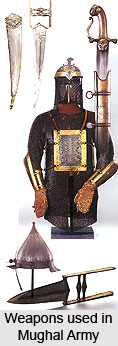 There was no regular system of medical attendance particularly during a battle. Regular kitchens were run by the Imperial entourage and by the Mansabdars for the staff immediately near them namely the servants, guards and other followers.
There was no regular system of medical attendance particularly during a battle. Regular kitchens were run by the Imperial entourage and by the Mansabdars for the staff immediately near them namely the servants, guards and other followers.
Weapons used in Mughal Army
Weapons, in use by the Mughal army, were not much different to those used by the Afghans except that with the introduction of gun powder a variety of pistols, guns and artillery pieces were also used. Commanders carried a dagger and sword tucked in the kamar-band belt tied round the waist. The matchlock was long steel barrel three to five feet in length and filled with gun powder from the front and fired with a fuse from the back or side. The soldier also carried a wooden fork or tripod to rest his matchlock while firing. Other weapons were mace, dagger, fowling-piece, sabre, pistol, spear, swords of various sizes, shield, dagger, battle-axe, club and bow and arrows. All these were very well ornamented and wrought in gold, silver and other precious stones according to the status of the individual. Armour for personal protection was either made of steel plating or steel network.
The Mughals were mostly on the move with the large scale campaigning that they undertook. As all the power was concentrated in the hands of the Emperors these moves entailed large scale movement not only of the army but of governmental machinery and official records. Further, the Mughals did not have a national army. It was composed of a sizable number of foreign elements - Persians, Central Asians and Afghan soldiers of fortune.







